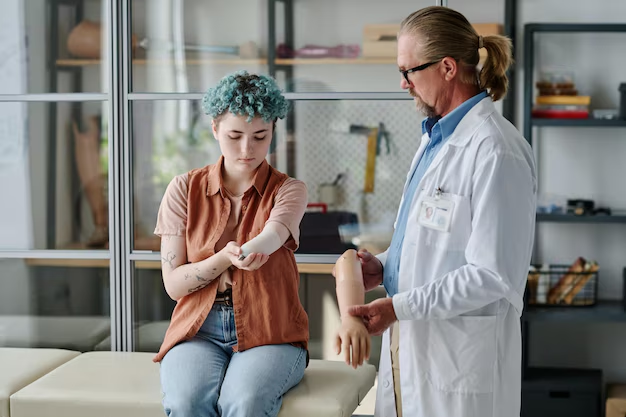Understanding Follicular Lymphoma: Essential Insights and Knowledge
Have you ever wondered what follicular lymphoma is and how it affects the body? You're not alone. As one of the most common types of non-Hodgkin lymphoma, follicular lymphoma piques interest and concern alike. Here, we delve into the core aspects of follicular lymphoma, exploring its characteristics, symptoms, potential treatments, and the broader context of non-Hodgkin lymphomas to provide a comprehensive understanding without veering into medical advice territory.
What Is Follicular Lymphoma?
Follicular lymphoma is a specific type of non-Hodgkin lymphoma (NHL) that originates in the lymphatic system, specifically from B cells—a type of white blood cell tasked with producing antibodies to fight infections. Unlike more aggressive forms of lymphoma, follicular lymphoma is generally considered indolent, meaning it tends to grow slowly and often appears in a pattern resembling follicles, hence its name.
Characteristics of Follicular Lymphoma
Follicular lymphoma is typically recognized by its pattern of spread and behavior:
- Slow-Progressing: This type of lymphoma often advances slowly, allowing for more monitoring and tailored treatment over time.
- Painless Lymphadenopathy: Swelling of the lymph nodes is common but usually not painful, which sometimes leads to delayed diagnosis.
- Potential for Transformation: In some cases, follicular lymphoma may transform into a more aggressive type, such as diffuse large B-cell lymphoma (DLBCL).
Symptoms to Watch For
Despite its slow progression, follicular lymphoma can manifest through various symptoms. Recognizing these symptoms early can be crucial:
- Swollen Lymph Nodes: Typically in the neck, underarm, or groin.
- Fever and Night Sweats: Unexplained fevers and excessive sweating during sleep.
- Unintended Weight Loss: Noticeable weight drops without changes in diet or exercise.
- Fatigue: Persistent tiredness that affects daily activities.
- Fullness or Pain: Feeling of fullness or pain in the abdomen due to swelling of the spleen or liver.
What Causes Follicular Lymphoma?
While the exact cause remains elusive, certain risk factors are commonly associated with its development:
- Age and Gender: More frequently seen in individuals over 60 and slightly more common in men.
- Genetic Mutations: Abnormalities in B cells, often involving a translocation between chromosomes 14 and 18.
- Environmental Factors: Possible exposure to certain pesticides or chemicals.
- Immune System Compromise: Previous infection or immune-related disorders might slightly elevate risk.
Diagnosis: How Is Follicular Lymphoma Identified?
Diagnosis typically involves a combination of methodologies to ensure accuracy:
- Physical Examination: Initial checks for swollen lymph nodes or organs.
- Biopsy: Tissue samples from affected nodes provide definitive diagnosis.
- Blood Tests: Measure cell counts and chemical levels for anomalies.
- Imaging Studies: CT, PET, or MRI scans evaluate the spread and impact of the disease.
Navigating Treatment Options
Treatment for follicular lymphoma varies based on stage and progression. While some patients require immediate intervention, others may benefit from a watchful waiting approach. Here’s a look at common treatment modalities:
Chemotherapy and Radiation
- Chemotherapy: Often the first line of treatment, using specific drug regimens to target cancerous cells.
- Radiation Therapy: Localized radiation can help control cancer spread in early-stage lymphoma.
Immunotherapy and Targeted Therapy
- Monoclonal Antibodies: Drugs like Rituximab work by triggering immune responses against B cells.
- Targeted Drugs: Designed to disrupt specific pathways that cancer cells use to survive and multiply.
Stem Cell Transplant
In cases of recurrence or after aggressive treatment, some may consider a stem cell transplant. This involves replacing diseased bone marrow with healthy stem cells to rejuvenate normal blood cell production.
Lifestyle Adjustments and Support
Living with follicular lymphoma involves adjustments and support structures to enhance quality of life:
- Regular Monitoring: Frequent check-ups to assess changes in the condition.
- Healthy Diet and Exercise: Boost energy and improve overall well-being.
- Support Networks: Engaging with support groups and counseling can provide emotional assistance and shared experiences.
Understanding Prognosis and Living with Follicular Lymphoma
Follicular lymphoma, while typically incurable, enables many individuals to live relatively normal lives with appropriate management. Modern advancements have made it possible to effectively control symptoms and extend remission periods. Here’s what typically influences prognosis:
- Stage at Diagnosis: Earlier detection generally correlates with better outcomes.
- Overall Health: Strong overall health and lack of other conditions can improve treatment success.
- Response to Treatment: How well the cancer responds, especially to first-line treatments like Rituximab, plays a critical role.
Opportunities for Research and Future Prospects
Ongoing research offers hope for new treatments and other potential options:
- Clinical Trials: Opportunities for patients to access groundbreaking therapies under investigation.
- Gene Therapy: Exploring genetic manipulation to directly target cancer.
- Holistic Treatments: Investigating alternative therapies as complementary to conventional methods.
Ending on a hopeful note, the landscape of follicular lymphoma treatment continues to evolve with science and technology, aiming to improve patient outcomes and quality of life.
⚡ Quick Summary: Follicular Lymphoma at a Glance ⚡
- Definition: A slow-growing type of non-Hodgkin lymphoma affecting B cells. 🧬
- Symptoms: Look out for swollen lymph nodes, night sweats, weight loss, and fatigue. 🤒
- Risk Factors: Age, gender, genetic mutations, environmental, and immune system issues. 🌿
- Diagnosis: Combines physical exams, biopsies, blood tests, and imaging. 🔍
- Treatments: Chemotherapy, radiation, immunotherapy, and stem cell transplant are key options. 💊
- Prognosis: Generally manageable with advances in treatment and ongoing monitoring. 🌟
- Future Prospects: Research and trials continually enhance treatment approaches. 🔬
